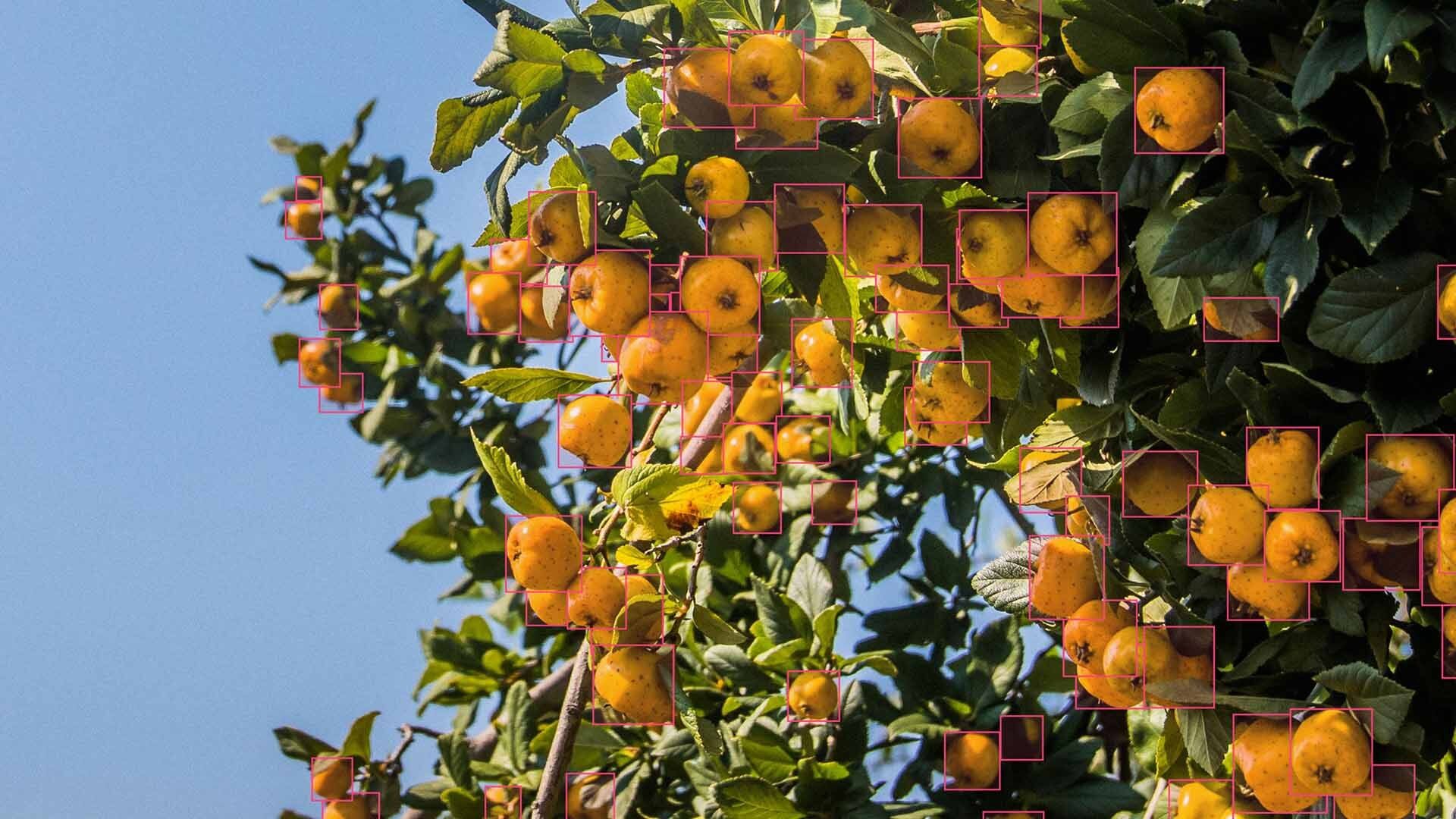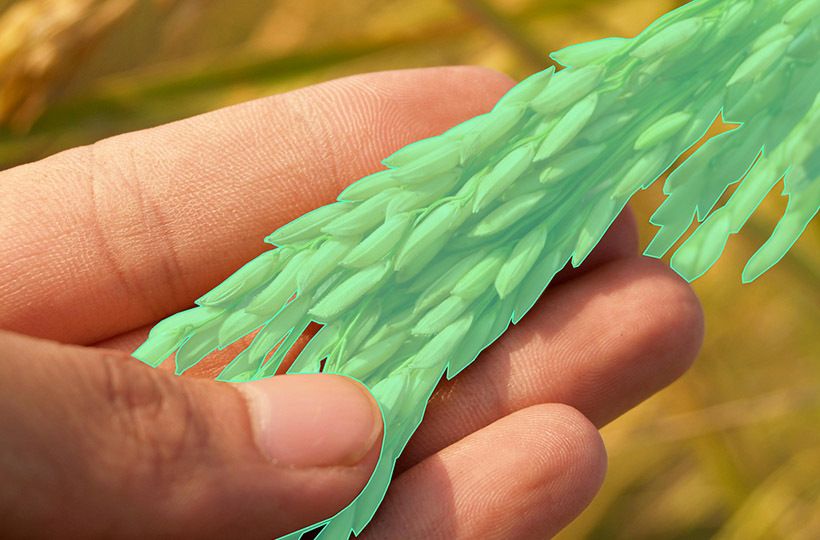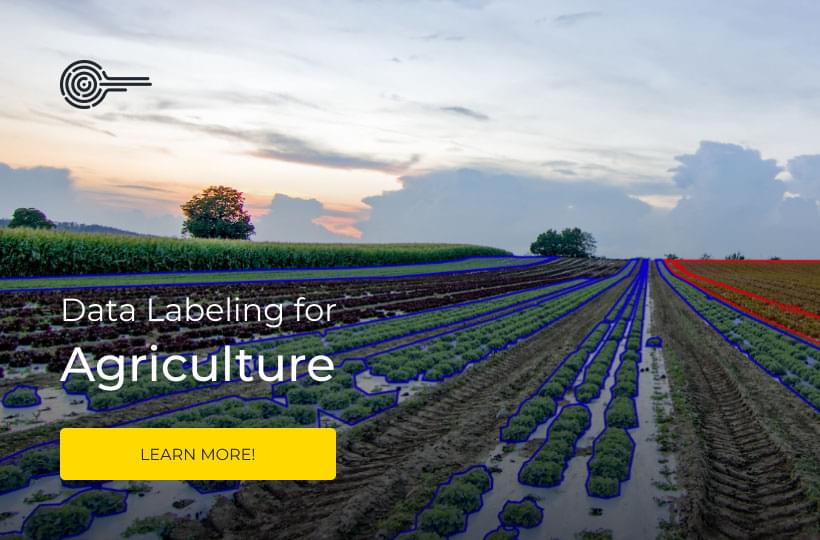Cultivating with Intelligence: How AI and Machine Learning are Revolutionizing Agriculture

AI agriculture market is on track to jump from USD 1.7 billion to a massive USD 4.8 billion by 2028. It's growing at a Compound Annual Growth Rate (CAGR) of 23.1%. This spike is a clear indicator of the revolutionary role of AI and machine learning in agriculture. They're moving from theory to practice, tackling issues like climate change and the scarcity of resources.
With the global population expected to surge to 10 billion by 2050, relying solely on old-school farming won't cut it. AI steps in as a crucial ally here, with methods like precision farming and predictive analytics. This technology empowers farmers to make informed decisions, boosting crop yields without needing more land.
Key Takeaways
- The AI in agriculture market is set to grow dramatically, underlined by a CAGR of 23.1% from 2023 to 2028.
- Technological advancements in farming are crucial to meet the needs of a population projected to reach 10 billion by 2050.
- AI applications like precision farming and predictive analytics are pivotal in increasing crop yields and reducing resource waste.
- Companies like Intellias are at the forefront of integrating AI into modern farming practices.
- The global market value of smart farming is expected to double by 2027, highlighting its growing significance.

The Rise of AI in Agriculture
AI empowers technologies that improve quality control and compliance. Advances allow for tracking wheat growth and tomato ripeness accurately and quickly. Moreover, AI helps in detecting apple black rot and identifying pest insects with over 90% accuracy. This enhances crop health and management significantly.
AI technology evolution includes drones, which apply pesticides precisely. They calculate the exact amounts needed, reducing waste. This not only benefits the environment but also saves costs. Vertical farming with AI also dramatically enhances food production while conserving resources. This showcases the efficiency of AI in agriculture.
Small-scale farmers gain from these technologies by increasing yields and conserving resources. This boosts both productivity and income. Yet, AI's adoption in agriculture faces hurdles such as poor infrastructure and a digital literacy gap. Overcoming these through technology partnerships and collaborations is crucial. This will unlock artificial intelligence's full potential in farming.
Benefits of AI in Agriculture
Artificial intelligence brings dramatic improvements to agriculture. By utilizing data and predictive analytics, it equips farmers with precision in decision-making. This results in effective resource management, lower chemical use, and foresight into potential challenges. Consequently, farming becomes both sustainable and productive.
Enhanced Productivity
AI markedly elevates agricultural productivity. It foresees weather conditions and their impacts, aiding farmers in reducing crop damage. Moreover, AI aids in refining irrigation, surveying crop and soil health, plus early disease and pest detection. Hence, AI ensures higher yields from the same land.
Cost Savings
AI slashes costs in agriculture significantly. Robotization addresses labor shortages, heightening efficiency via autonomous weeding and harvesting. Moreover, AI's data-driven insights refine market analysis and farm timing optimization. This leads to increased yields with lessened resource outlay.
Sustainability
AI underpins sustainable agricultural methods. By backing reduced tillage and precise irrigation, it conserves resources while cutting farming's environmental impact. Additionally, AI knowledge graphs help farmers navigate supply chain issues and refine sourcing. This makes agriculture more resilient and eco-friendly.
| AI Benefits | Impact on Agriculture |
|---|---|
| Predictive Analytics | Reduced crop losses and enhanced decision-making |
| Automated Machinery | Increased productivity and labor cost reduction |
| Resource Optimization | Improved sustainability and environmental efficiency |
| Soil & Crop Monitoring | Better health management and yield maximization |
AI Applications in Agriculture
The integration of artificial intelligence into agriculture is transforming traditional farming. Use cases for AI in agriculture show it boosting efficiency through technology.
Agricultural robots, like John Deere's 8R autonomous driving tractors, are streamlining tasks. Equipped with stereo vision and AI, these tractors mark a major advancement in automation.
Farmers are adopting AI for crop management to better monitor their fields. UAVs with AI-driven vision automate pesticide and fertilizer spraying, enhancing application efficiency and saving resources.
AI also plays a crucial role in monitoring soil and crop health. It uses computer vision to detect conditions, predict yields, and identify malnutrition quicker than humans. For instance, an AI algorithm estimated tomato maturity with a 99.31% accuracy via color analysis.
AI systems are becoming essential for pest and disease detection. Research on apple black rot identified a 90.4% accuracy rate, aiding farmers in crop maintenance. Such systems also excel in tracking and counting flying insects, with an accuracy of 90.18%.
Intelligent irrigation systems represent another key use of AI. They use smart sensors and weather data to tailor water delivery, boosting growth while cutting water use by 25%. AI in fertilizer applications also enhances input efficiency, benefiting the environment and farmers' finances.
AI in Agriculture Explained
Precision agriculture stands out in AI's agricultural applications. This method involves precision farming techniques for enhanced crop supervision, yield predictions, and resource management. By combining satellite images, sensors, machine learning, IoT, and sophisticated computing, farmers gain precise soil condition insights.
Smart farming also incorporates AI in plant safeguarding to tailor pesticide use. Besides, AI-operated tractors and drones amplify farming efficiency. This automation cuts labor expenses and boosts operation accuracy.
In livestock management, AI improves animal welfare, thus increasing farm produce. AI-driven irrigation adjusts watering based on weather and soil data, reducing water use.
However, adopting AI poses challenges, including high setup costs, possible job market shift, and various biases. Despite these, the consensus is that AI is crucial for agriculture's progress.
Still, AI is altering farming by improving crop development, automating tasks, and ensuring a reliable supply chain. Its contribution to sustainable agriculture, like better crop and soil quality, underscores its vital presence in agriculture's future.

Smart Farming Technologies
Technology's evolution is significantly impacting industries, including agriculture. Smart farming technologies, particularly through IoT in agriculture, are vital in tackling issues like population increase, resource preservation, and labor shortages. They provide innovative solutions to these pressing problems.
IoT and Sensor Integration
Irrigation, fertilization, and pest control improve drastically with IoT and sensor technologies. They enable real-time monitoring of crop and soil statuses. In California, a cloud-based vine stress monitor has boosted yields by 26% and cut water use by 16%.
Autonomous Machinery
Automation plays a crucial role in modern farming with autonomous machines and robots. Tasks are done more accurately with this tech, lessening reliance on human labor. It also ensures steady productivity and operational uptime.
Furthermore, precision in applying fertilizers and pesticides is achieved, minimizing environmental harm. In the UK, sensor-equipped cattle improve dairy outputs by tracking their movements and behaviors. Such innovations in livestock farming boost productivity sustainably.
Precision Agriculture with AI
Precision agriculture incorporates AI to boost farm analytics, optimize crops, and enhance resource management. It uses data from diverse sources, aiding farmers in making informed decisions. This boosts productivity and sustainability effectively.
Variable Rate Technology (VRT) allows farmers to fine-tune input rates across their fields. This optimizes yields, cuts costs, and lessens the environmental footprint. VRT is crucial for efficient resource use, aiming for minimal waste and maximal output.
Remote Sensing Technologies (RST) utilize satellites and drones to gain vital crop health data. Insight into moisture levels and nutrient status from RST is critical. It enables effective crop management, allowing for prompt actions to sustain or boost crop conditions.
Precision irrigation employs VRT to conserve water and boost yields by tailoring water supply. Adjustments are based on moisture levels and weather predictions. Such precision in farm resource management is key to sustainable resource use.
A clear table displays key components of precision agriculture and their advantages:
| Technology | Function | Benefits |
|---|---|---|
| Variable Rate Technology (VRT) | Adjusts input application rates | Optimizes yields, reduces costs, minimizes environmental impact |
| Remote Sensing Technologies (RST) | Provides data on crop health and resources | Effective crop management and timely interventions |
| Precision Irrigation Systems (PIS) | Adjusts water delivery based on moisture and forecasts | Water conservation, enhanced crop yields |
| Data Analytics & Decision Support Systems | Analyzes diverse data sources for crop management | Enhanced profitability and sustainability |
AI-driven crop monitoring and management software compiles sensor, drone, and satellite data. This ensures effective monitoring of crop growth, along with pest and disease tracking. Timely interventions prompted by these insights considerably reduce potential losses, protecting investments.
The prowess of AI in precision agriculture lies in its predictive analytics. It allows farmers to foresee yields, tailor irrigation, and manage pests and diseases efficiently. This forecasting capability is vital for judicious resource use in farming.
The economic upside of precision agriculture is promising, with gains projected between $500 billion to $1.5 trillion globally by 2030, McKinsey suggests. Adopting AI in agriculture not only boosts output but also promotes sustainable, efficient farming practices.
AI Solutions for Agriculture
Artificial Intelligence (AI) is revolutionizing agriculture, making it smarter and more efficient. Farmers can now use data and algorithms to make better decisions, predict the future, and improve their farms. Here are some crucial ways AI is changing agriculture for the better.
Predictive Analytics
Predictive analytics harness large datasets from IoT devices, weather reports, and past data. This predicts crop yield, soil health, and weather, letting farmers act early. 75% of farmers using AI for soil have seen better crop rotation and early soil degradation detection, boosting productivity.
Pest and Disease Management
Machine learning algorithms in AI-based systems quickly identify and manage pests and diseases. 72% of farmers report these AI technologies reduce environmental harm and use resources efficiently. Faster, more accurate pest control means healthier crops and less waste.
Yield Optimization
AI uses drones, sensors, and satellites to check crop health and predict yields. 83% of farmers report better yields and more sustainable farming with AI crop monitoring. Analyzing growth and soil conditions, AI guides farmers to enhance productivity.
| AI Application | Farmer Benefit | Percentage of Farmers Seen Benefits |
|---|---|---|
| Soil Monitoring | Early detection of soil degradation and better crop rotation planning | 75% |
| Damage, Pest, and Weed Management | Reduced environmental impact and optimized resource usage | 72% |
| Crop Yield Monitoring | Improvement in crop yield and sustainable practices | 83% |
The Role of AI in Agribusiness
The influence of Artificial Intelligence (AI) in agribusiness goes beyond enhancing production. It optimizes supply chains, forecasts market prices, and transforms decision-making. With AI, agribusinesses significantly boost their profitability and sustainability.
Examples include Hello Tractor and Esoko. They predict growing machinery needs and provide real-time market data. This enables efficient resource use and timely decisions for farmers.
Broadly, AI enhances agriculture by:
- Analyzing market demand
- Minimizing crop failure risks
- Cross-breeding seeds
- Monitoring soil health
- Protecting crops from diseases
- Evaluating crop maturity
- Implementing intelligent spraying systems
Agribusiness innovation taps into image annotation for tasks like detecting fruiting, livestock counting, and crop health monitoring. This shows AI's significant role in pre-emptive farm management.
By utilizing computer vision and machine learning, pesticide use can drop by up to 90%. This results in healthier crops and reduced costs. Chatbots serve as bridge between farmers and clients, offering product information, order management, and updates on weather and market trends.
| Metric | 2022 | 2028 |
|---|---|---|
| Precision Farming Market Value | USD 542 million | USD 1,432 million |
| AI Spending Growth | USD 1 billion | USD 4 billion |
| IoT, -Enabled Agricultural Monitoring | USD 4.5 billion | Growth Expected |
North America currently leads the AI in agribusiness market. It's expected to keep its lead with a projected value of $4 billion by 2030. This reflects the area's significant technology investments.
AI and Sustainable Farming
Integrating AI into agriculture drives sustainable practices by enhancing resource management, reducing chemical use, and adapting to climate changes. This significant contribution of AI pushes agriculture towards sustainability.
Resource Management
For sustainable agriculture, efficient resource management is key. AI offers cutting-edge solutions for this. It uses precision farming powered by AI to optimally use water and nutrients. This approach tackles agriculture's major use of freshwater, alleviating water scarcity.
AI sensors analyze soil health, helping farmers maintain its fertility. This reduces erosion risks and ensures the land’s long-term health. Such technologies are pivotal in promoting sustainable farming practices.
Reduced Chemical Use
Traditional farming often leads to environmental damage and biodiversity loss due to widespread chemical use. AI steps in with technologies like machine learning to predict pest attacks and manage fertilizer use smartly. This reduces environmental impact in agriculture.
It allows for precise chemical application—only where and when needed. AI's automation fosters adaptive, eco-friendly farming, making it more resource-efficient.
Climate Adaptation
The challenge of climate change is immense for agriculture. But, AI equips farmers with tools for adaptation. It forecasts environmental shifts, empowering farmers with strategies to face climate extremes. With AI's predictive analytics, automated irrigation, and crop monitoring, agriculture stays productive amidst climate variability.
| AI Benefits | Details |
|---|---|
| Resource Optimization | Optimizes the use of water, nutrients, and soil, addressing water scarcity and soil degradation. |
| Precision Farming | Reduces chemical usage and minimizes environmental impact through targeted interventions. |
| Climate Adaptation | Forecasts environmental changes for proactive farming strategies, building climate resilience. |
Summary
The future of farming with AI is brimming with possibilities for making agriculture more efficient, sustainable, and productive. AI's role in farming, evident in activities like yield prediction and soil management to pest and livestock monitoring, is crucial. These technologies are key in meeting the food needs of a growing global population.
The challenges of adopting AI, such as the slow technology adoption process, unfamiliarity with tech, and data privacy concerns, can't be ignored. Yet, the positive effects of AI on farming outweigh these issues. By incorporating AI, complex tasks are automated, resource use is optimized, and crop quality is boosted through precision farming.
Looking ahead, AI and machine learning's further integration into agriculture is essential. Innovations like Blue River Technology's robotics and Jivabhumi's smart agricultural marketplace showcase AI's transformative power. With these technologies, farmers can make better decisions, minimize risks, and enhance their operations' sustainability and productivity.
FAQ
What is the main reason agriculture is adopting AI-driven technologies?
The world's population is expected to reach 10 billion by 2050. To sustainably meet this surge without enlarging farmlands, the agricultural sector is evolving. It's turning to artificial intelligence to boost efficiency and productivity. AI also helps tackle issues such as resource scarcity and climate change.
How is AI transforming traditional farming practices?
AI revolutionizes farming with innovations like traceability and predictive analytics. These tools empower farmers with data for informed decision-making. This results in better crop monitoring and optimized use of resources. Ultimately, it leads to increased agriculture productivity.
What are the benefits of AI in agriculture?
AI in agriculture boosts productivity and facilitates automation. It helps save costs through precision farming and sustainable practices. This includes optimizing resource use and reducing chemical reliance.
What is precision agriculture and how does AI contribute to it?
Precision agriculture leverages AI to interpret data from various sources. This offers actionable insights on optimal farming actions. AI ensures high yields and efficient resource use. It aids in managing pests and diseases and analyzing market demands, too.
What AI applications are currently being used in farming?
Current AI farming applications enhance irrigation, pests, and diseases detection, and crop monitoring. They also improve livestock health and enable intelligent pesticide use. These innovations drive up productivity and ensure agriculture sustainability.
How does AI contribute to sustainable farming?
AI fosters sustainable farming by ensuring efficient use of resources. It minimizes harmful chemical use and supports climate change adaptation. These efforts help protect ecosystems without compromising agricultural output.
What are some examples of companies leveraging AI in agriculture?
Intellias is using AI to upgrade agriculture with better quality control. Companies like Hello Tractor and Esoko bring AI into agribusiness. They particularly focus on boosting efficiency and productivity in Africa's agricultural sector.
How is AI helping with pest and disease management in agriculture?
AI enhances pest and disease management through improved detection and predictive analytics. This leads to quick actions that minimize crop damage. It keeps crops healthy while reducing chemical dependency.
What is the projected market growth for AI in agriculture?
The AI agriculture market is set to soar from USD 1.7 billion in 2023 to USD 4.7 billion by 2028. This growth highlights the expanding role and impact of AI in transforming farming practices.




